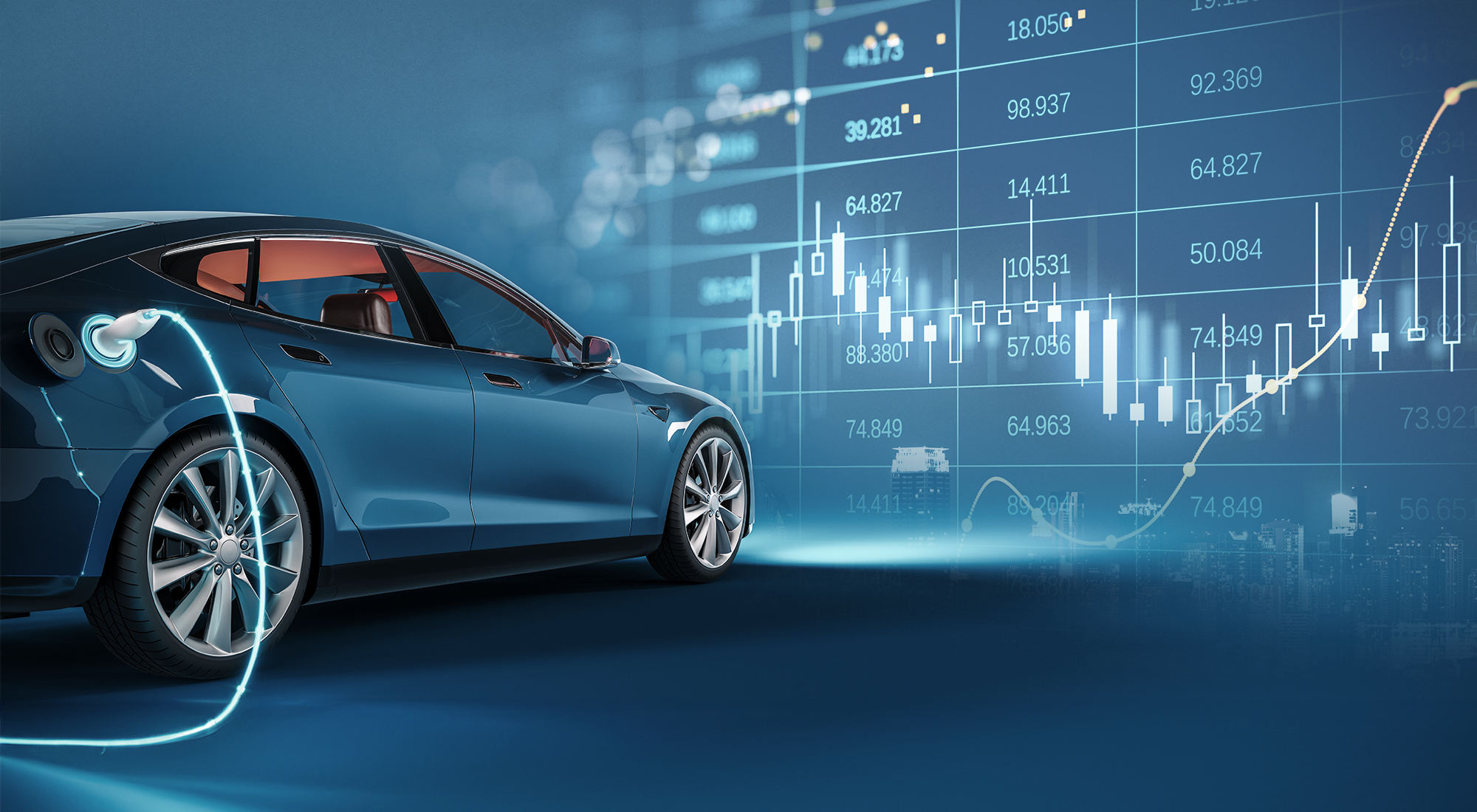The Electric Vehicles Initiative (EVI), a forum founded in 2010 by multiple governments under the Clean Energy Ministerial (CEM), aims to accelerate the worldwide adoption of electric vehicles. In 2022, the EVI introduced the Zero Emission Government Fleet Declaration, which obliges governments to procure 100% zero-emission vehicles for public use. Despite supply chain disruptions, economic and geopolitical uncertainty, and high commodity and energy prices, electric car sales hit a new record in 2022. Sales of battery electric vehicles (BEVs) and plug-in hybrid electric vehicles (PHEVs) exceeded 10 million in 2022, up 55% from 2021. The proportion of electric cars in total car sales rose from 9% to 14%. EV sales increased from around 1 million to over 10 million in just five years, surpassing the total number of cars sold across the European Union.
The Global EV Outlook is a comprehensive and detailed annual publication that provides policymakers with valuable information about how electric mobility is developing globally. This report, which is produced by the EVI, tracks and analyzes the adoption of electric vehicles in different countries, cities, and regions. It covers a wide range of topics, including trends in sales, market share, charging infrastructure, and policy incentives. The report presents data-driven insights and helps policymakers make informed decisions on accelerating the transition to sustainable and low-carbon transport. Ultimately, the Global EV Outlook serves as an essential resource for anyone interested in the future of electric mobility.[i]
Global trends and policy efforts in significant car markets suggest a bright electric vehicle (EV) sales outlook. According to the IEA Stated Policies Scenario (STEPS), the global share of EV sales is expected to rise to 35% in 2030, up from less than 25% in the previous outlook. China is predicted to remain the largest market for EVs, while the United States and Europe are expected to double and maintain their current shares of the market, respectively. By 2030, it is anticipated that EVs will lower oil demand and eliminate emissions. It is in this context that the European Union and the United States are passing legislation aligned with their 2030 goals, while battery manufacturing is expanding to meet the demand for EVs.
In 2023, around 14 million electric cars were sold globally, with most of the sales in China, Europe, and the United States. The total number of vehicles on the road reached 40 million, with battery-electric cars accounting for 70% of the stock. These figures align with the sales forecast mentioned in the Global EV Outlook 2023. The sales of electric vehicles increased by 35% compared to the previous year, and electric cars contributed to 18% of the total vehicle sales in 2023.[ii]
EVs’ impact on addressing environmental, transportation, and energy challenges
The advancements in transportation and technology brought forward by the automotive industry cannot be denied. However, the industry has also played a significant role in the degradation of our environment. As a result, there has been a push for sustainable transportation, with EVs being seen as a fundamental solution. Despite being beneficial in numerous ways, the market share of EVs still needs to grow, mainly due to challenges such as battery technology, charging infrastructure, and high upfront costs.
Innovative business models, government incentives, and improved charging infrastructure are essential to enabling the EV industry to grow. However, the high cost of infrastructure, the price of EVs, the dearth of charging stations, and the limited range continue to be some critical challenges that need to be addressed. In response, scientists are developing better battery technology to increase driving range while reducing weight, cost, and charging time. Ultimately, the direction of EVs will be determined by these factors.
Adopting EVs is crucial to building sustainable and efficient smart cities. These cities can offer lower operating costs, reduce greenhouse gas emissions, and improve air quality. However, several obstacles, such as range anxiety, infrastructure, and battery cost, must be addressed to integrate EVs into smart cities effectively. To overcome these challenges, governments and private companies can invest in charging infrastructure, improve battery technology and charging speeds, and increase awareness about the benefits of EVs. Financial incentives, mandating minimum EV sales targets, and funding charging infrastructure can also help promote EV adoption.
Public education programs can help overcome barriers such as range anxiety and a lack of knowledge about the benefits of EVs. By implementing these strategies, we can transition to a more sustainable transportation system while reducing our dependence on fossil fuels and combating climate change. The future of electric vehicles looks promising, given advancements in battery technology, charging infrastructure, and supportive policies. Battery prices are expected to drop significantly, making EVs more affordable and convenient for consumers. Incorporating them into intelligent city programs can improve efficiency. As the market grows, we can expect new models with enhanced driving ranges and faster charging times, including self-driving EVs.[iii]
EVs’ economic rationale, wide-ranging effects, and analysis of their policy implications
Policymakers believe vehicle electrification is crucial to tackling environmental, transportation, and energy policy challenges. Many countries and states worldwide have set ambitious goals for transitioning from internal combustion engines (ICEs) to EVs. However, EVs are not necessarily superior to ICEs in terms of economic or environmental impact, creating a complex landscape for policymaking. The economics of EVs are analyzed in three ways to understand their economic reasoning and policy implications. Firstly, the private rationale for EV adoption by consumers is evaluated. In many situations, operational savings from EVs make up for their higher upfront purchase price. However, the operational savings compared to gas-powered vehicles vary significantly across different states and utility territories within states. This variation is documented, and the role of regulatory policy is highlighted.
Secondly, policymakers use the external benefits of EVs as a reason for intervention in the EV market. Potential social benefits of EV subsidies include reducing pollution, industrial learning-by-doing, network externalities related to charging infrastructure, and improving energy security. These claimed benefits are evaluated for their relevance and potential magnitude using economic theory and empirical evidence. Thirdly, the private and public economics of EVs imply optimal EV policy. Using efficiency as a benchmark, the current landscape of EV policy is described and assessed. The impact of existing policies on the private benefits of EV adoption, the degree to which these policies can improve or diminish social welfare, and how current policies might work together to promote or hinder EV adoption are considered.
EVs play a crucial role in addressing environmental, transportation, and energy issues. However, policies to promote EVs are often developed in isolation, leading to conflicting policies. For instance, high electricity prices may encourage individuals to install rooftop solar or invest in energy-efficient equipment, making EVs more expensive than ICE vehicles. Additionally, policymakers may design EV interventions to meet the objectives of multiple stakeholders, which may reduce their efficacy in achieving a single purpose, such as reducing greenhouse gas emissions.
To create efficient EV policies, policymakers must consider external costs and benefits, such as production spillovers, energy security, and global climate change mitigation. These factors are similar across all locations in the U.S. in the short and medium run, and thus, uniform policies that equate marginal costs and benefits are likely to be effective. However, externalities arising from local pollution or network effects related to charging infrastructure density may vary by geography. In such cases, a decentralized approach to policy may be optimal, and decision control should be delegated to state and local authorities. The electric vehicle market has a time component, and the benefits of reducing pollution by driving EVs instead of ICE vehicles will increase as electricity grids shift to renewable energy. The optimal policy should consider the current grid composition and increase incentives as grids become less polluting. Justifying subsidy levels is challenging, and estimating the extent of learning by doing and determining non-appropriability is difficult.
The policies surrounding EVs are complex and reflect the intricacies of the economy’s transportation and energy sectors. These policies are designed to achieve a variety of social and environmental goals. This paper examines the economic reasoning behind market failures and policy objectives and explores how they align with current policies. However, we found that many market failures are specific to certain locations and periods. A “one-size-fits-all” policy like the federal EV subsidy is unlikely to effectively incentivize EV adoption, use, or environmental benefits.
Benefits from EV-induced pollution reductions show substantial spatial heterogeneity based on regional variations in the makeup of the electricity grid. Thus, these benefits are likely to increase over time with grid decarbonization. A clear implication is that EV subsidies cannot be justified based on environmental benefits in regions where coal electricity generation persists. As electricity becomes greener, the benefits of EVs will change, so policies should be adjusted accordingly. Externalities like learning-by-doing in production or network effects justify government intervention in the early stages of the EV market. However, this should decrease over time. Although subsidies may be necessary in the short term, they must be clarified if charging infrastructure needs them. Tesla’s supercharger network shows the caution policymakers need when promoting irreversible infrastructure investments.
The increasing focus on social and environmental justice goals in environmental policy is significant. While the authors emphasize equitable economic outcomes, cost-effectiveness is equally essential. When stimulating the demand for EVs in an area with low private benefits, it creates a disproportionate distortion compared to other alternatives. In such cases, EV owners would be better off receiving the cash equivalent of the EV subsidy rather than the subsidy itself. Policymakers must identify ways to deploy public resources that maximize net benefits in an economy with limited resources and multiple policy objectives. This requires avoiding conflicting incentives.[iv]
EVs’ roles in reducing carbon emissions
Climate change is a pressing issue affecting the world in various ways. One of the primary contributors to this problem is greenhouse gas emissions, and the transportation industry is a significant source of these emissions. While EVs can potentially reduce greenhouse gas emissions from transportation, a recent report suggests that they will only have a minor impact on emissions reduction in the next five years. However, a more significant effect is expected in the following decade. EVs can be vital in decarbonizing the U.S. transportation sector by emitting no tailpipe emissions. Despite this, the U.S. transportation industry still has a long way to go to achieve zero emissions, as most vehicles still run on gasoline. While the number of EVs on the road is increasing, they still represent only a tiny portion of the total number of cars.
Traditional vehicles that run on gasoline or diesel emit carbon dioxide (CO2) and other harmful pollutants, which contribute to air pollution, global warming, and climate change. In contrast, electric vehicles are powered by electricity stored in batteries and produce zero tailpipe emissions, making them an excellent solution for reducing carbon emissions and combating climate change.
EVs have several critical benefits for reducing carbon emissions. Firstly, they produce zero tailpipe emissions, significantly reducing the direct release of CO2 and harmful pollutants into the atmosphere. Secondly, as the use of renewable energy sources such as solar and wind increases, the carbon intensity of electricity generation decreases, resulting in a smaller carbon footprint for EVs. Thirdly, EVs are more energy-efficient than traditional cars, which means they convert a higher percentage of energy from the grid into usable power for propulsion, wasting less energy during the process. Finally, the growth of EVs has accelerated the integration of renewable energy sources into the power grid, making it easier to transition to a cleaner and more sustainable energy future.
Despite their potential, challenges to the widespread adoption of electric vehicles still need to be addressed. These challenges include limited driving range, the need for an expanded charging infrastructure, and the environmental impact of battery production and disposal. To address these issues, governments, industries, and individuals must work together to invest in charging infrastructure, incentivize electric vehicle adoption, and continue research and development in battery technology to improve energy density, decrease costs, and reduce the environmental impact of battery production and recycling.[v]
Growth of the Hybrid Vehicle Market and its impact on the EV Market
According to market research, the global market for hybrid electric vehicles is expected to grow by more than 14% between 2021 and 2031. This growth is due to increased awareness of environmental issues and the need for more fuel-efficient vehicles. The market value of hybrid cars is expected to exceed $100 million by 2031, which indicates a significant shift in consumer preferences towards eco-friendly transportation options. The market was valued at $227.94 billion in 2022 and is expected to grow steadily, reaching $443.91 billion by 2030. This growth is attributed to the rising demand for hybrid electric vehicles globally, with governments and automotive manufacturers investing heavily in their research and development. Additionally, increasing charging stations and incentives for adopting hybrid technology drive consumer adoption rates.
Total crossover vehicles are a type of hybrid car that combines a gas engine and an electric motor. Due to the electric motor, total hybrids can handle a more significant workload than mild hybrids. While most total hybrids can only travel a short distance on electric power alone, they still offer many advantages over EVs. Some customers may view electric cars negatively due to limitations such as limited driving range, long recharge times, and the lack of charging infrastructure. On the other hand, hybrid vehicles are already commercially available and offer significant fuel economy without requiring additional infrastructure investments. Furthermore, unlike electric vehicles, hybrid cars do not have the issue of limited range, making them a more accessible option for many people.
Improvements in fuel efficiency, particularly in hybrid vehicle technology, may lead to households adopting hybrid vehicles as their primary mode of transportation. Notably, this adoption can occur without additional infrastructure investment, which is a significant advantage over EVs. While variable costs such as gasoline and maintenance can be considered external factors we cannot control, fixed costs cannot. This is because car manufacturers operate in markets that could be more perfectly competitive. Different market structures include a monopolist producing both regular and electric vehicles or a duopoly in which one manufacturer sells regular cars and a competitor only offers EVs.[vi]
It would be beneficial to analyze different scenarios where markets offer regular, hybrid, and electric vehicles and various types of commuters based on their location and socio-demographic factors like income. Moreover, commuters living beyond the electric vehicle range can use car rental or car-sharing services for leisure trips. These industries can adapt their strategies based on how commuters adopt electric cars. The government supports EVs mainly because they can help reduce pollution, and negative externalities validate this support. Commuters are believed to overlook the environmental damage caused by gasoline-powered vehicles. This argument can justify subsidies for electric car buyers, fuel taxes, or a combination.
Specific infrastructure investment will be required to establish EVs in the long term, such as charging stations at leisure destinations. This infrastructure investment will give electric cars a more extended range, making them more attractive to consumers. Installing a charging station at a leisure destination can increase the range of electric cars. Assuming the vehicle can be fully charged while the customer is at the leisure destination, the charging station will put every commuter within the EV range, simplifying our analysis.
However, the cost of building and maintaining a charging station may not justify the benefits of a higher consumer surplus in some instances. Therefore, a charging station may not increase electric vehicle adoption for some parameter values in our framework.
The expectation of EVs in the global vehicle market
Last year, EV sales reached a historic milestone, with 14 million sold worldwide. The electric vehicle marketing trend is expected to continue, with sales of EVs predicted to account for a significant proportion of all cars sold in various regions. Specifically, by 2024, EVs are projected to account for 45% of all cars sold in China, 25% in Europe, and 11% in the United States. The ever-increasing competition between car manufacturers, the falling car and battery prices, and government subsidies are the primary factors behind the growth of the electric vehicle market.
The demand for electric cars is rising in China due to their lower prices than non-electric models. This trend is not limited to China alone, as the costs of EVs are gradually decreasing worldwide, making them more affordable and accessible to the public. Furthermore, the second-hand market for electric cars is expanding, making it easier for people to transition towards this advanced technology. The shift towards EVs will significantly impact the automobile and energy sectors. The automobile industry will experience a considerable shift as electric cars replace traditional gasoline-powered cars. The energy sector will also transform as electricity demand increases and renewable energy sources will be needed to power these EVs.
Notably, Chinese car manufacturers are leading the way in producing electric cars, accounting for more than half of all-electric vehicles sold globally, despite only 10% of their models being non-electric. This exceptional trend has given Chinese automakers a significant advantage in the electric car market. Chinese carmakers have achieved this feat by incorporating cutting-edge technology into their electric cars and offering them at competitive prices, making them attractive to consumers worldwide. In conclusion, the increasing popularity of electric cars and the growing market for second-hand EVs will significantly transform the automobile and energy sectors. Given their technological edge and competitive pricing, Chinese car manufacturers’ dominance in the electric car market is expected to continue.

If the current growth rate in the automotive industry is sustained, carbon dioxide emissions from cars could be significantly reduced, putting us on the path towards achieving the Net Zero Emissions by 2050 (NZE) scenario by 2030. However, while the adoption of EVs is gaining momentum in certain regions, it remains limited in developing and emerging economies due to their relatively high purchase price and the need for charging infrastructure. Despite these challenges, the electric vehicle market is expected to grow to an impressive $8.8 trillion by 2030 and a staggering $56.7 trillion by 2050. Over this period, most sales are projected to be passenger EVs, accounting for 80% of the market share in 2030 and 70% by 2050.
Despite facing economic challenges, the electric vehicle market is witnessing a significant surge in demand worldwide. According to Anthony Sassine, CFA, senior investment strategist and head of MENA at KraneShares, EVs are a rare source of growth for global investors. Sassine’s analysis shows that major EV manufacturers worldwide have experienced recent success, highlighting the momentum in the sector. Investing in EVs can be an attractive option for investors looking for diversification, as growth in this sector is driven more by energy transition tailwinds than economic cycles. Additionally, the success of EV manufacturers indicates the trend towards sustainable energy, which is set to continue in the long term.
Various factors, such as the increasing awareness of the impact of fossil fuels on the environment and the growing demand for clean energy solutions, support this trend. Moreover, as governments worldwide incentivize the adoption of EVs, the market for these vehicles is expected to grow further. Investing in EVs provides a unique opportunity to benefit from the growing trend towards sustainable energy. As the market grows, investors can benefit from increased demand for EVs, charging infrastructure, and related technology. Therefore, investing in electric cars can be a wise move for investors who wish to diversify their portfolio and benefit from the long-term growth prospects of the EV industry.[vii]
Net-zero emissions and EV demand
The transition to net-zero emissions will increase demand for EVs due to their relationship with international emission trends. As the world approaches attaining net-zero emissions, the demand for electric cars is expected to rise exponentially. This is because EVs emit significantly less greenhouse gases than traditional gasoline-powered vehicles, thus seen as a critical solution to reducing carbon emissions. Additionally, the international community has set ambitious emission targets, which will require a significant increase in the adoption of EVs.
However, this transition towards EVs has its challenges. Automakers across the globe will need to adapt to the changing market dynamics, which will require significant investments in research and development, infrastructure, and manufacturing. Additionally, they must address various concerns, such as range anxiety, charging infrastructure, and battery technology, which could impact consumer acceptance of EVs.
Despite these challenges, the shift towards EVs presents a unique opportunity for automakers to innovate and differentiate themselves in a rapidly evolving market. Those who can successfully navigate these challenges and offer compelling electric vehicle solutions stand to gain a significant competitive advantage in the market.
The transition towards achieving net-zero emissions targets is a global priority that requires the involvement of all sectors and countries. In particular, the mobility sector plays a vital role in this transition. Achieving net-zero emissions in the mobility sector requires simultaneous technological and structural change. New technologies must be developed, and existing systems must be transformed to reduce greenhouse gas emissions.
While the transition to net-zero emissions may require consumers to spend more on upfront capital, it is important to note that the overall cost of owning a vehicle will be reduced in the long run. For example, EVs have lower operating costs and require less maintenance than traditional combustion engine cars. Additionally, the transition to net-zero emissions in the mobility sector creates new employment opportunities as jobs are reallocated across activities. This shift towards a more sustainable future would require a skilled workforce, boost the economy, and create new jobs.
It is important to remember that companies in the mobility industry will face transition risks during this shift. However, this change also creates opportunities for mobility companies to introduce new products and services that align with net-zero emissions targets. For instance, in a net-zero emissions scenario, capital spending on low-emission vehicles could average $3.4 trillion annually for the next three decades.[viii] The shift towards net-zero emissions also provides mobility companies with opportunities to invest in renewable energy sources, such as wind and solar power.
Transitioning to EVs can be beneficial in reducing the cost of passenger car ownership over time. However, it is essential to note that this shift may lead to a net loss of 14 million jobs. Nonetheless, various opportunities can arise from transitioning to EVs, including manufacturing EV batteries and fuel cells and producing the materials required to make these essential components. Additionally, building, operating, and making infrastructure for charging battery electric vehicles (BEVs) and refueling fuel cell electric vehicles (FCEVs) could create jobs. Moreover, creating digital solutions to integrate the new vehicle energy infrastructure with the power grid could further bolster the job market.
It is essential to consider that achieving a net-zero carbon scenario could increase e-hailing and micro-mobility services like e-bikes and scooters, which can create more job opportunities. However, all stakeholders must work together to coordinate an appropriate response to take advantage of these opportunities and manage the costs and risks associated with the transition. Decarbonizing mobility is essential for reducing physical climate risks and maintaining social interaction, commerce, exploration, and self-expression. Therefore, it is necessary to ensure that the transition to EVs is as smooth as possible, and all parties involved must work together to achieve this goal.
Conclusion
A coordinated effort among all stakeholders is necessary to achieve net-zero emissions in the mobility sector. The transition will require simultaneous technological and structural changes, which will ultimately lead to a reduction in the overall cost of owning an electric vehicle in the long run, creating new employment opportunities, and giving companies new chances to introduce innovative products and services.
[i] “Electric Vehicles Initiative, Global EV Outlook 2023,” IEA, https://www.iea.org/reports/global-ev-outlook-2023/electric-vehicles-initiative#abstract.
[ii] “Electric cars sales break new records with momentum expected to continue through 2023,” IEA, https://www.iea.org/reports/global-ev-outlook-2023/executive-summary.
[iii] Fayez Alanazi, “Electric Vehicles: Benefits, Challenges, and Potential Solutions for Widespread Adaptation,”, Applied Sciences 13, no. 10 (2023), 6016; https://doi.org/10.3390/app13106016,
[iv] David S. Rapson and Erich Muehlegger, “The Economic of Electric Vehicles,” Working Paper 29093, National Bureau of Economic Research, http://www.nber.org/papers/w29093.
[v] “The Role of Electric Vehicles in Reducing Carbon Emissions,” Gemopai, August 1, 2023, https://gemopai.com/electric-vehicles-reducing-carbon-emissions
[vi] “Hybrid electric vehicles market,” Fact.MR, March-2022 https://www.factmr.com/report/270/hybrid-electric-vehicles
[vii] “EV Market Forecast to Reach $56 Trillion by 2050,” Nasdaq, August 8, 2023, https://www.nasdaq.com/articles/ev-market-forecast-to-reach-$56-trillion-by-2050
[viii] Eric Hannon, Mekala Krishnan, Jwalit Patel and Shivika Sahdev, “Mobility’s net-zero transitions: A look at opportunities and risks,” McKinsey & Company, April 25, 2022, https://www.mckinsey.com/industries/automotive-and-assembly/our-insights/mobilitys-net-zero-transition-a-look-at-opportunities-and-risks.








